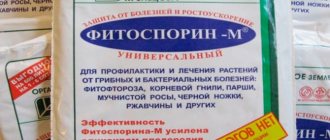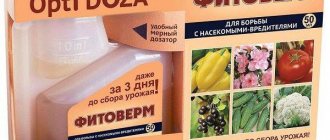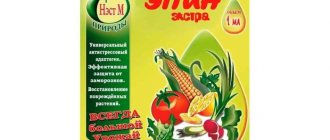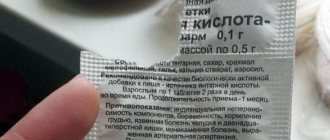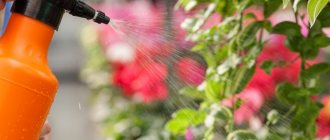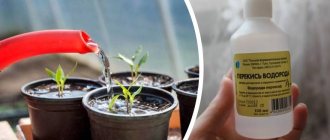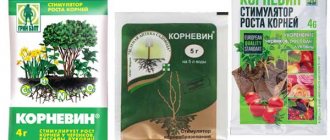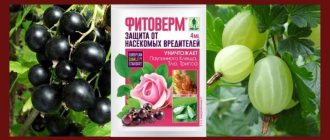Description
Fitosporin M is a new generation drug, a so-called macrobiotic. The substance is effective against plant diseases caused by bacteria or fungi. The drug is universal, it can be used to treat:
- indoor flowers;
- cuttings preparing for planting;
- fruit horticultural crops;
- vegetables in beds and greenhouses.
The drug has the desired effect thanks to the bacteria Bacillus subtilis included in its composition. Fitosporin M is manufactured in Ufa and belongs to the group of biopesticides and fungicides. The product begins to act as soon as it reaches its destination.
Science has proven that the bacteria that make up Fitosporin M are harmless to humans and the environment. For example, if you spray the solution on fruits, berries or vegetables, you can eat them the same day without any health consequences. Let's say more - certain strains of the bacteria Bacillus subtilis are included in medications intended for the treatment of childhood intestinal infections. The bacterium Bacillus subtilis is a spore culture that can quickly spread throughout all the vessels of a flower.
However, Fitosporin M is not an absolute panacea: its effectiveness, depending on various circumstances, can range from 65% to 95%. But considering the non-toxicity and safety of the pesticide, this indicator is very good. The drug is able to retain its beneficial properties in the range from +40 to -50 degrees. Even if it is frozen and thawed, the bacteria in Fitosporin will be quite viable.
It is impossible to list all types of diseases against which the drug is effective, but we will name the most common:
- root rots of various types;
- scab;
- powdery mildew;
- late blight;
- bacteriosis;
- white spotting;
- rhizoctoniasis;
- mold;
- Phomasis;
- leaf rust, etc.
Kinds
Fitosporin M can be purchased in three different versions:
- powder;
- viscous paste;
- liquid.
All types can cope with fungi and bacteria with approximately the same effectiveness - their various options are created only for the convenience of the user.
The powder has the form of a finely dispersed dry substance, the paste has the form of a flat cake packed in a plastic bag, and the liquid has the form of a concentrated suspension. Before using any type of drug, it must be diluted with water in the proportion indicated in the instructions for use.
Reanimator
In addition to the listed types, there is also Fitosporin-reanimator. This type is intended for the restoration of tissues affected by diseases. The product contains antibiotics, amino acids and other useful components. These substances quickly destroy pathogenic microflora and easily deal with harmful spores. Thanks to the drug, it is possible to enhance the growth of crops after diseases and protect them from adverse effects.
Sales of the drug
Phytosporin for indoor plants is sold in the form of powder, paste or liquid. In terms of the degree of impact, they are all approximately the same, that is, they replace each other. The variety of forms is explained by the manufacturer’s desire to make the use of this product as convenient as possible. The concentration of bacteria is the same everywhere.
In addition, the so-called phytosporin-reanimator is also produced. It consists of small dry tiles sealed in polyethylene. This concentrate is intended for the treatment of damaged plants.
In addition to the bacteria Bacillus subtilis, the resuscitator contains antibiotics, amino acids and vitamins. Under the influence of the product, damaged plant tissues are restored very quickly.
Purpose
The drug Fitosporin M can be used to treat indoor plants (and others) at any stage of the growing season. You can also use the product even when the plants are blooming or their fruits are ripening. Such use is permitted due to the fact that the drug has extremely low toxicity and is safe. Therefore, you can use Fitosporin M in an apartment without fear that treating potted plants will cause poisoning to family members and animals.
Thanks to Fitosporin:
- the stress factor in indoor plants is reduced;
- resistance to diseases becomes higher;
- immunity is activated;
- exchange processes improve.
The drug fights pathogenic microflora and protects plants from re-infection.
The product immediately after reaching its destination begins its fight against harmful microorganisms. Few other drugs can destroy pathological fungi and bacteria as quickly. For watering indoor flowers, Fitosporin M is usually used once a month - this is quite enough to protect crops from diseases.
Fitosporin for tomatoes and cucumbers
The drug is used to treat tomatoes and cucumbers. It is important to understand that such crops require intensive care, as they are susceptible to many diseases, so it would be a shame to lose the harvest.
It is unacceptable to treat cucumbers and tomatoes with the drug at the time of flowering, since pesticides tend to accumulate in the fruits. But there is a way out - at the time of flowering, apply foliar fertilizers, for example, boric acid.
Important! Don't forget about late blight prevention.
Protection of seedlings from late blight and other diseases is carried out at different periods:
- When soaking seeds;
- When planting seedlings.
It is worth remembering that in a greenhouse or greenhouse the microclimate is favorable for the development of infections. It is enough to treat with fungicides 1-2 times per season.
As for phytosporin-M, the soil can be treated with it many times, since it is an indispensable tool for organic farming. Despite the fact that the drug has a weak antifungal effect.
Tomatoes and cucumbers should be sprayed with a solution at the rate of 5 grams of phytosporin-M per 10 liters of water. After 5-7 days it is necessary to spray again.
Concentration doesn't matter. You can add enough phytosporin to get a rich tea color.
Important! You cannot process tomatoes and cucumbers outdoors in cold weather! Watering frequency is at least once every 5 days.
How to use
To use the product correctly, it is necessary to consider the features of its use in the form of powder, paste and liquid. We will consider everything in relation to caring for indoor plants.
Liquid
Fitosporin M in this version is intended mainly for spraying and watering indoor and garden flowers, as well as greenhouse crops. You can also spray the seed intended for storage with the solution.
To care for home flowers, it is convenient to use Fitosporin M, packaged in 110 ml containers. To water the plant, the concentrate must first be diluted with water: the proportion depends on the type of plant, its age, and state of health. If preventive treatment is required, the following proportion is usually used: one tablespoon of concentrate per bucket of water. The resulting amount of solution is designed to water 1 m2 of soil, so if there are few potted plants at home, the proportion must be reduced.
The instructions say that if it is necessary to treat the seed - cuttings, shoots - before planting, they should be soaked in a Fitosporin solution for an hour (4 tablespoons of concentrate per liter of water).
To treat indoor flowers to protect them from fungus and bacteria, you should use the following proportion: 2 drops of concentrated preparation per 1 glass of water.
Paste
To treat plants with paste, the paste must be turned into a liquid solution. First, prepare a concentrate by diluting 100 grams of the drug in one glass of water. To spray indoor plants, take two drops of the prepared liquid concentrate per glass of water, for watering - 15 drops per the same amount of water.
After dissolving the paste in water, be sure to stir the mixture so that the substance is distributed more evenly. The solution obtained from the paste can be stored.
To prepare a solution for pre-sowing treatment of planting material, you need to dilute 2 drops of concentrate in a glass of water: keep the seeds, shoots, and bulbs in the liquid for two hours. To water indoor flowers, you should prepare a working solution in the following proportion: 15 drops per liter.
Due to the fact that the paste contains the nutritious elixir GUMI, the effect of the solution becomes similar to the effect of fertilizers. Let us also note the immunomodulatory properties of this substance: thanks to the solution obtained from the paste, indoor flowers recover much faster after illness or pruning. It is important to know that humic acids are necessary only for the roots - it is therefore not advisable to use the paste for spraying.
Powder
To prepare the solution, a 10-gram sachet should be diluted in a glass of water. The result is a concentrate, which is then used for watering and spraying indoor flowers (2 drops and 15 per glass of water). It is necessary to dilute the powder an hour or two before direct watering or spraying. A fresh solution will be most effective.
For spraying and watering for preventive purposes, the powder is diluted in the following proportion: half a teaspoon per glass of water. If the flowers are sick and need to be treated, the solution is prepared less concentrated: half a teaspoon per liter of water. The resulting liquid can be used to treat both indoor and garden flowers.
Use of phytosporin
The drug refers to drugs that can independently spread throughout the plant’s vascular system. The basis of Fitosporin-M is a spore culture, which, thanks to its waste products, can suppress the development of fungal and bacterial diseases:
- Alternaria;
- Bacteriosis;
- Root rot;
- Powdery mildew;
- Brown rust;
- Fomosa;
- Rust;
- Snow mold;
- Bacterial spotting;
- Septoria;
- Monolial burn;
- Downy mildew;
- Rhizoctoniosis;
- Fusarium rot;
- Cercospora.
The drug also protects against the formation of rot during storage:
- Gray rot;
- Black dry rot;
- White rot;
- Fruit rot.
It is important to understand that such a drug cannot cure or prevent absolutely all diseases. Its effectiveness may vary from plant to plant. It depends on the type of disease, the effect of the drug can be from 65 to 95%. Such indicators are considered good, given the fact that the drug is low-toxic and can be used at home.
One of the advantages of the drug is that live cultures can be stored at temperatures ranging from -50 to +40°C. Even in freezing conditions, the drug retains its properties. If unfavorable conditions are created for the Bacillus subtilis culture, it goes into a spore state and vital activity ceases for a while. However, as soon as conditions are restored, the bacteria become active again and inhibit bacteria and pathogenic fungi. In addition, the biofungicide Fitosporin-M may contain the bioactive fertilizer GUMI. As a rule, the manufacturer writes about this on the packaging. Humic acids are used to treat the root system. You should not treat vegetables and fruits with them, even before storing.
Important !!! The main advantage of the drug is the ability to use it at any period of plant development. It can be used both during the growing season and during the period of flowering and ripening of fruits.
The manufacturer claims that the crop is safe even on the day of treatment with phytosporin.
However, it is worth highlighting the disadvantage. When exposed to direct sunlight, Bacillus subtilis bacteria die, so spraying of plants should be done in cloudy weather or when the sun is not active. In addition, we must not forget to rinse fruits and vegetables with hot water before consuming them. Simply wash the berries under cold running water.
The drug can also be used to treat seeds and seedlings before planting. Experienced gardeners often treat open ground with phytosporin. Any weather conditions are suitable for this procedure. But there is one caveat: if it rains after spraying, then re-treatment will be necessary, as the protective film will be washed off. The frequency of spraying should be 1-2 weeks. If the rains are too frequent, then you need to spray a couple of hours before the rain or immediately after the rain.
If Fitosporin is used for irrigation, then the frequency of the procedure for vegetable crops is 1 time per month, and for fruits and berries - 2 times. If we are talking about indoor plants - once a month.
To combat scab, you can also treat trees with phytosporin. To do this, you need to dissolve 5 grams of powder in 10 liters of water. Spray the tree crown using a stepladder or ladder. It is recommended to combine spraying with phytosporin with a growth stimulator. For example, zircon (1 ml of substance per 10 liters of water). The first spraying should be done when the leaves are at the unfolding stage, and the second - when the ovary process has just begun. Watering the trees is not necessary, since a large amount of solution will not be absorbed by the roots.
Phytosporin powder
You need to prepare the solution 1-2 hours before spraying:
- Soaking bulbs and tubers. You will need: 10 grams of powder, 500 ml of water. Treat preplanting material with this solution;
- To soak the seeds before sowing. You will need: 0.5 teaspoon of powder and 100 ml of water;
- To prevent rot in the root system of seedlings. You will need: 10 grams of the drug and 5 liters of water. You need to leave the roots in this solution for a couple of hours. After and before planting, you can water the soil with the solution;
For preventive purposes of bacterial and fungal diseases:
- For potato prevention: 10 grams of powder per 5 liters of water. Repeated spraying after two weeks;
- To prevent cabbage: 6 grams of powder per 10 liters of water. Repeated spraying after 2-3 weeks;
- For the prevention of tomatoes, eggplants and peppers: 5 grams of powder per 10 liters of water. Repeated spraying after 10-14 days;
- For the prevention of cucumbers: 10 grams of powder per 5 liters of water. Treat three times at intervals of 10-15 days. For treating garden flowers and indoor plants: 0.5 teaspoon per 2 liters of water - for preventive purposes. For treatment purposes - 0.5 teaspoon of powder per 1 liter of water;
- For treating the soil before planting berries and vegetables: 5 grams of powder per 10 liters of water. Treat the soil a week before planting.
Fitosporin paste
Fitosporin-M paste, which contains GUMI and does not require additives. How to prepare the solution: add 100 grams of paste to 200 ml of water. The solution can be stored for a long time. Before spraying, the mixture must be diluted with water:
- Before planting or storing tubers and bulbs, you need to dilute the solution: 3 tbsp per glass of water. spoons of concentrated mixture;
- To soak vegetable and garden flower seeds, add 2 drops of solution to 0.5 cups of water. Keep the seeds in the solution for 2 hours;
- To strengthen the cuttings you need to take 4 drops of concentrate per 200 ml of water;
- Foliar spraying of berries, vegetables, fruits and flowers for preventive purposes - 3 teaspoons of watering mixture per 10 liters of water. And for spraying - 4 drops of the mixture per 200 ml of water;
- Spraying indoor plants. For 10 liters of water you need to take 10 drops for spraying. And for irrigation, 15 drops per 1 liter of water.
Fitosporin liquid
Liquid phytosporin in finished form is used to treat vegetative crops:
- Indoor;
- Fruit;
- Vegetables;
- Berry.
And also for spraying tubers before storage.
The manufacturer offers to use the solution in various variations. The bottle may contain the following inscriptions:
- "Fitosporin - M Bioprotection for flowers and indoor plants";
- "Fitosporin - M Golden Autumn";
- "Fitosporin - M Storage."
All solutions have an identical composition of useful substances.
Fitosporin-M Reanimator
Bacillus subtilis concentrate contains many amino acids and other useful microelements. All useful substances help dissolve the cell walls of fungi and bacteria. In addition, the drug helps restore plant growth after:
- Overmoistening;
- Sunburn;
- Disease damage;
- Freezing.
The solution can be used with other stimulants for the growth of seedlings.
Watch the video! How to save sick plants Fitosporin M Reanimator
Compatibility
Macrobiotic agent Fitosporin M is compatible with various chemicals. The following drugs can be used simultaneously with the use of Fitosporin:
- Aktara;
- Fitoverm;
- Quadris;
- Strobe;
- Fundazol;
- Vitivax 2000 and others.
Also, the use of Fitosporin can be combined with fertilizers and root stimulants:
- Zircon;
- Amulet;
- Epin;
- Plantafon and others.
Important: you cannot combine the use of this product with alkaline preparations.
It is also not recommended to use Fitosporin paste simultaneously with growth stimulants, since the paste contains humic acids.
Combination of phytosporin with other drugs
The appearance of infection can be facilitated by poor climate, deficiency or excess of fertilizers, especially nitrogen. For this reason, treatment must be comprehensive, so that treatment of flowers with phytosporin is in the first place in its program.
On a note
If necessary, to eliminate harmful insects, the biological product can be safely used in conjunction with insecticides such as Vitivax 200, Quadris, Strobi, and Fundazol. But you need to be careful when combining phytosporin with fertilizers, because it already contains fertile humus in its finished form. Traditional minerals like urea and superphosphate are not suitable for the hero of the topic. Another thing is advanced growth regulators (for example, Epin, Zircon, Plantafol). If only the composition of these products does not contain alkalis, which react violently with the biofungicide
Phytosporin for flowers, the use of which can give a head start to the notorious “chemistry”, manages to come in handy at any stage of plant care, regardless of the degree of their neglect:
- pre-sowing preparation of seeds and tubers;
- processing of planting soil;
- preventive spraying;
- root feeding;
- treatment of early and late diseases.
And it doesn’t matter at all if phytosporin for roses was used through a spray bottle on the eve of Valentine’s Day or March 8: the biological product is not only harmless, it reduces the level of toxicity that occurs due to excessive mineralization of the soil, acid rain, and emissions from industrial enterprises.
It has been proven that the fruits of garden and berry crops can be safely used for food within a day from the moment their “nest” is processed. Watering roses with phytosporin indoors causes even less concern about harm to the body: after spraying, the decorative “spike” quickly comes to life, and the gardener can only hear the pleasant aroma of freshness and the flower itself.
What plants is it suitable for?
The drug Fitosporin M, as already mentioned, has universal application and, in addition to garden crops, can be used to protect indoor plants. The product is effective for treating all green, flowering, ornamental, climbing, deciduous and any other plants grown in the house.
The drug is convenient to prepare, economical, and safe. The product can be used for:
- spraying the ground parts of plants;
- watering;
- disinfection of seeds and shoots, cuttings;
- treatment of plants during transplantation.
We dilute paste-like Fitosporin M
- Take a glass of clean water without chlorine (you can take different amounts of water - 10 g is possible, you just need to take into account the proportion - 1 part paste to 2 parts water).
- Stir 100 g of paste in a glass of water and get a concentrate
Important! The concentrate can be stored for 6 months, which means it can be used in spring and summer, diluted can be stored for 7 days.
- Leave for two hours to activate bacteria.
- We use concentrate at the rate of:
- 2 drops per glass for spraying;
- 15 drops - for watering sick plants.
Safety precautions and storage conditions
The drug is slightly toxic (hazard class 4). If it gets on mucous membranes, it may cause irritation to the latter. It is absolutely non-toxic for plants, and also harmless for beneficial insects (although you are unlikely to have any at home).
To guarantee protection from the effects of the chemical, it is recommended to carry out all work with Fitosporin with gloves. You should not smoke, eat or drink while working to prevent the drug from getting on your mucous membranes. If the product does get on the skin, it should be washed off immediately with water. If it gets into your mouth and is swallowed, you need to drink 3-4 glasses of water, induce vomiting using a couple of fingers, then take activated charcoal.
Store Fitosporin M in a dry place, the temperature should be from +20 to +30 degrees (that is, the refrigerator is not suitable). It is important that the product is inaccessible to children and pets. The already prepared working solution can also be stored in a dark and cool place.
Fitosporin M is a universal and safe remedy for protecting indoor plants from fungal and bacterial diseases. It is these diseases that often affect plants and cause them to wither and die. With the help of Fitosporin M you can prevent disease and cope with harmful microbes, even if they have already infected the plant.
How to prepare the working solution correctly
Fitosporin M in any form is a concentrate that can be harmful. Therefore, you need to know how to breed it correctly. The main feature of the drug is that you first need to prepare a seed solution. Then it needs to be diluted to working level. The following rules must also be followed:
- Do not use tap water. It contains chlorine, which kills bacteria. You can use bottled water, purified by a filter, melt water, rain water, or water that has been standing for at least a day and boiled.
- Follow the dosage strictly. Excessive amounts of the drug can harm plants.
- Use only in the evening or in cloudy weather. Direct sunlight can kill bacteria.
- Choose the right type of processing. For plants that do not like spraying, root treatment should not be used.
